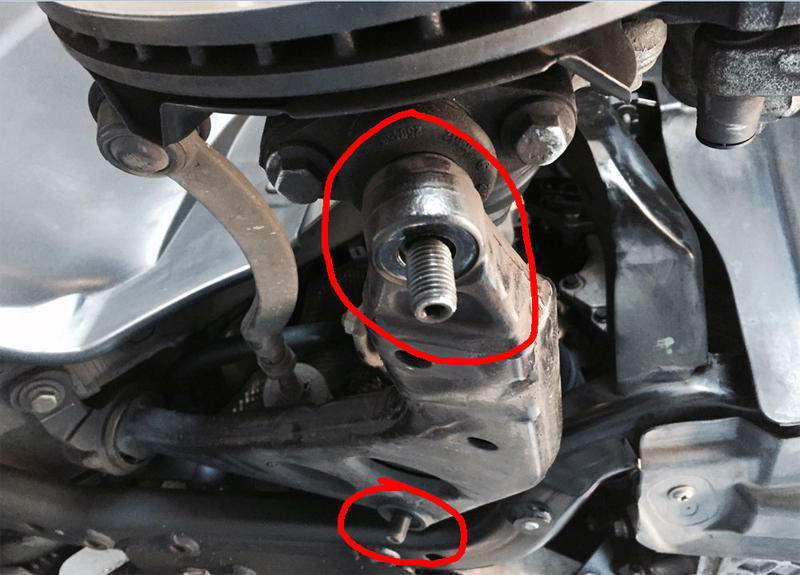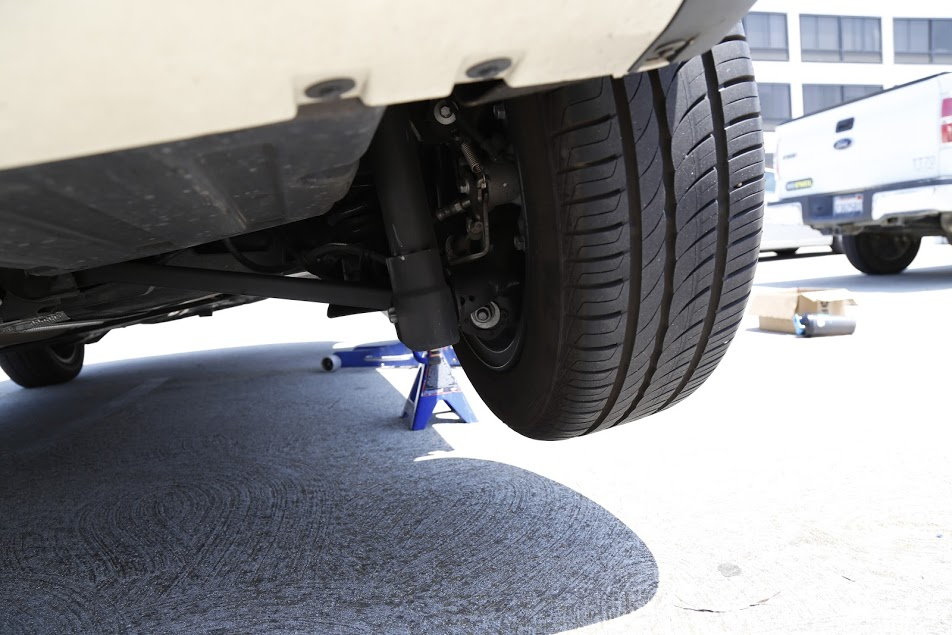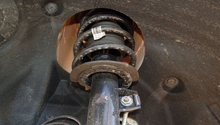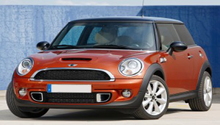Mini Cooper 2014-Present: Suspension Diagnostic Guide
Is the suspension in your MINI causing it to ride rough, cause noises, or pull to one side? This article will help you get to the bottom of your suspension issues and get your car riding smoothly again.
This article applies to the MINI Cooper (2014-present).
Your car's suspension takes a ton of abuse every day as it cushions you from all the potholes, dips, and bumps in the road. It also provides you with both safe transportation and the ability to take corners at high speeds, which is something that every MINI owner can appreciate. But when suspension components wear down or break, a number of problems can arise, ranging from annoying to downright dangerous. If you're experiencing noises, erratic behavior, or diminished performance from your suspension, keep reading and we'll walk you through the diagnostic process.

Marerials Needed
- Jack and jack stands
- Standard size sockets or wrenches
- Torque wrench
- Zip ties (optional)
Step 1 – Check swivel bearing and control arm connection
A loose connection is a common issue that can cause a loud clunking noise.
There is a service bulletin out for the MINI's ball joints, namely a loose connection that can occur between the swivel bearing and control arm. This issue can lead to a loud clunking, knocking, or popping noise from the front suspension when turning the wheel in either direction. To fix the problem, simply re-torque the nut on the screw connection to 60 Nm.
In some cases, the control arm bushings may need to be replaced. If tightening the connection doesn't work for you, this is likely the culprit. Another, albeit rare, cause of the problem can be the wheel hub bolt. If the bolt is improperly torqued from the factory, it can come loose and even come off completely. It's worth checking your hub bolts to ensure they are torqued to spec.

If your problem can't be solved by tightening your bolts or replacing your control arm bushings, move on to Step 2.
Step 2 – Check the silicon "seat" on the springs
These hoses can slip down too far, leading to a creaking noise.
The silicon-rubber composite spring seat installed on newer MINI Cooper springs has a tendency to slip down and rub against the spring, leading to a creaking noise while driving. This is a simple fix — push the hose back up until it sits at the top of the first 360 mark on the coil. You can reach it by turning the wheel all the way in each direction. If necessary, a zip tie can be used to hold up the hose and keep it from slipping down again.
Step 3 – Check shock absorbers
They might be blown.
Your shock absorbers help control the up and down motions of your springs and the rate of roll that happens when you throw the car into a corner. Shocks are a wear-and-tear item, and when they wear out your MINI will feel excessively bouncy or floaty over bumps. Shocks and struts are easy to check.
Jack up your MINI, remove the wheels, and visually inspect the shocks; When they wear out, they tend to blow their seals and leak shock fluid. If your shocks are wet and covered in oil, it's time to replace them. If even that easy test is too much effort, we can further simplify: with your MINI parked on level ground, push down on the front and rear of the car to see how long it takes for the car to stop bouncing. If it's one quick jounce and then back to normal, the suspension is healthy. However, if you jounce the car and it bounces up and down for a few seconds, your shocks are dead and require replacement.

Maybe the issue lies elsewhere.
Step 4 – Check for unusual tire wear
Are your tires wearing down unevenly?
If your tires are wearing evenly, but simply too quickly for your expectations, it's time to buy different tires. However, you notice that your MINI is prone to pulling or wandering, and have uneven or unusual tire wear, you have an issue on your hands. Starting with the basics: When did you last have a wheel alignment performed? If you can't remember, it's time to have one done. Over time, and with even a light knock against a curb of pothole, your Mini's alignment can get out of wack, compromising handling, stability and tire wear.
If your alignment checks out on paper, you may have what is referred to as a "dynamic" alignment issue. This means that although when the car is stationary everything checks out, once the car and its suspension is moving, the issue arises. This is most often caused by worn suspension bushings, allowing for excess movement, causing uneven pressure to be applied on the tire, resulting in poor wear.

Related Discussions
- Loud Clunking From Front Suspension - NorthAmericanMotoring.com
- Wheel Hub Bolt Issue - NorthAmeicanMotoring.com
- Clicking/Grinding Noise When Turning Left - NorthAmericanMotoring.com
- Creaking Noise Over Bumps - NorthAmericanMotoring.com
- Steering Squeaks - NorthAmericanMotoring.com






